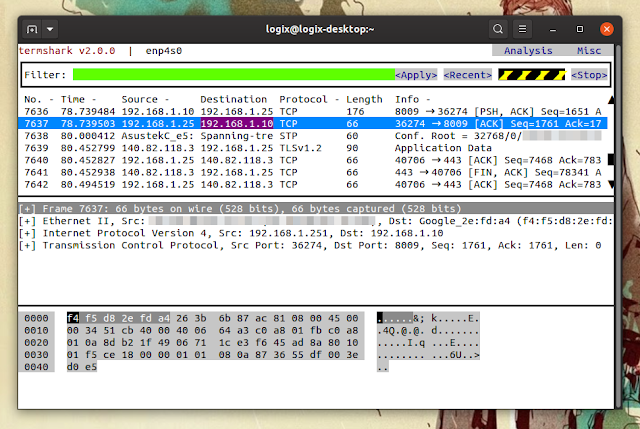
w write packets to a pcap-format file named "outfile" H read a list of entries from a hosts file, which will "Decode As", see the man page for details N enable specific name resolution(s): "mnNtCd" n disable all name resolutions (def: all enabled) Y packet displaY filter in Wireshark display filter R packet Read filter in Wireshark display filter syntax r set the filename to read from (- to read from stdin) duration:NUM - switch to next file after NUM secsįilesize:NUM - switch to next file after NUM KBįiles:NUM - ringbuffer: replace after NUM files duration:NUM - stop after NUM secondsįilesize:NUM - stop this file after NUM KB L print list of link-layer types of iface and exit y link layer type (def: first appropriate) f packet filter in libpcap filter syntax i name or idx of interface (def: first non-loopback) For more information on tshark see the manual pages ( man tshark). It supports the same options as wireshark. TShark is a terminal oriented version of Wireshark designed for capturing and displaying packets when an interactive user interface isn’t necessary or available. You can find more information about each command in the Manual Pages. These tools will be described in this chapter.



3. tcpdump: Capturing with tcpdump for viewing with Wireshark.Capture et Analyse de paquets avec Wireshark Exercices de mise en œuvre de l'infrastructure physique Contexte VoIP et des communications unifiées


 0 kommentar(er)
0 kommentar(er)
